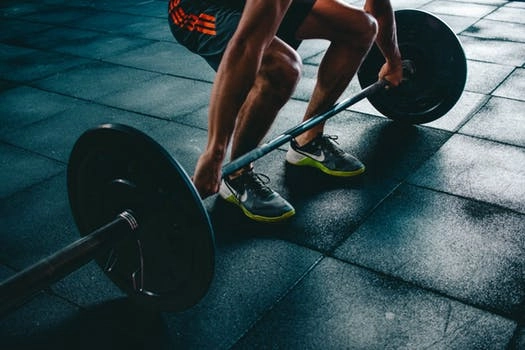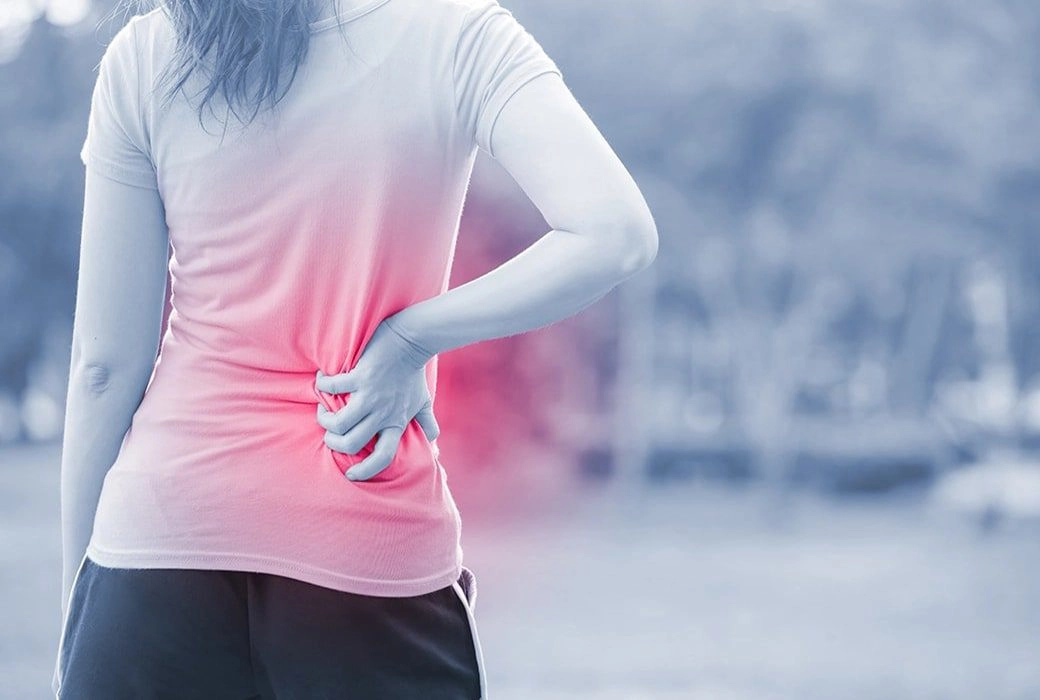If you have ever been exercising at the gym and heard someone say “Come on! Push through! Push through that pain!”, you might have wondered what “push through the pain” means and how someone can push through physical pain. Perhaps a more important question is should you push through the pain? Your Anchorage chiropractor has the answer.
Knowing when you should stop pushing through the pain when it comes to exercise can be complicated and confusing.
You will find people on both sides of this issue. Some people believe if you stop exercising because something hurts you will never become accustomed to the activity or you will never pick it up again.

Others believe pain is a sign from your body that something is wrong, and it needs to be addressed. Sometimes, the body just needs a bit of rest, other times, it needs medical attention from your Anchorage chiropractor or a doctor, but these people believe when you feel pain, you need to stop that activity.
Like many things in life, this is rarely a black-and-white issue. There are many shades of grey that we will discuss here so you can make a more informed decision.
The 5 Most Important Things to Remember about Pushing Through the Pain According to Your Anchorage-based Chiropractor
1) Keep Moving in Some Manner Unless It’s a Cardiovascular Event
Movement of any sort is King when it comes to exercise and recovery from injuries. Even for those who have sprained an ankle, for example, while they shouldn’t try to walk or jog, they can certainly perform upper body exercises and even some yoga poses.
However, if you believe that the pain you are feeling is cardiovascular in nature, you not only need to stop exercising immediately but seek medical attention!
This is especially true for women. Heart disease kills 1 in 3 women in the US alone. Many deaths occur in the Hispanic and black community due to a lack of awareness.
Common symptoms of a cardiovascular event for men include:
- Chest pain, sometimes mild, other times intense
- Chest discomfort or pressure (sometimes mistaken for heartburn)
- Pain from the waist up, including arms (usually the left arm), the upper back, shoulders, or even jaw and neck pain
- Shortness of breath
- Suddenly feeling tired and/or anxious
- Breaking into a cold sweat
Common symptoms for women are:
- A sudden feeling of nausea usually followed by vomiting
- Pressure in the center of the chest
- Shortness of breath
- Pain in the stomach, back, neck, and/or jaw
- Feeling dizzy or lightheaded
Women are more likely than men to feel back or jaw pain, as well as nausea and, have episodes of vomiting.
If you have any of the above symptoms, do NOT push through the pain. Seek medical attention immediately.
2) It’s OK to Feel the Burn

One of the most common causes of pain while exercising is the burning sensation that comes from overworked muscles. After exercising, muscle soreness is another common source of pain.
It is perfectly acceptable, and even advisable, to continue to push through the pain when the pain you are feeling is the burning type. For strength to increase, the muscles must feel some increase in the amount of stress or length of time the muscle is used.
When you work inside the “burn zone”, the muscles are reacting to a buildup of lactic acid, but this isn’t a bad thing. This is how your body will become stronger and learn endurance.
Now if what you are feeling is more like a sharp pain, especially if this pain is in the joints, then you should stop and reexamine your activity. Sharp pain can mean tendonitis, damage to the ligaments, or some other type of more severe injury.
When it comes to exercise, sometimes more is not better. Pushing yourself too far by lifting weights you have not build up to or not giving your body even one day of rest can cause you to become injured and will lead to more pain.
Like a baby learning to walk, you should take things slowly and build up to the bigger, better, stronger you. Work through the burn and be shocked by the results!
3) Are You Avoiding Exercise Because of Pain?
While working through the burn of sore muscles or gasping for air while doing that last set of sprints on your run is a good thing, avoiding exercise because of the pain is not.
Pushing through the pain is difficult to measure as people have vastly different pain tolerance levels. Pain tolerance not only varies from person to person, but research shows that it can even vary due to a person’s social background, gender, life experience, and even cultural background.
While it is important to exercise in whatever capacity a person can, the truth is that if you are avoiding exercise because of the pain it is causing, you need to, at least for the moment, stop doing that exercise.
Maybe all your ankle needs are 6 weeks of rest for you to go back to tennis. In the meantime, you can focus on other activities, such as yoga or practicing your swing while wearing a walking cast.
Continuing to push through the pain every time you exercise will eventually lead to a severe injury or you will stop exercising entirely.
In short, if you are avoiding exercise because of pain, don’t stop exercising; modify the routine so you can continue that activity, allow the body time to heal, or seek medical attention to address the issue.
4) Never Push Through the Pain in the Following Situations
If you find that the pain you are feeling is progressively becoming worse, is severe, intense, or disabling, you should not push through it.
Runners are especially fond of pushing through the pain. However, many of them also end up with disabling injuries because they don’t pay more attention to what their bodies are telling them.
You might wonder how people can continue to exercise despite severe pain, but it happens more often than you think. Many believe the pain will stop soon or that they will quit after the next mile or the next set or the next day.
Pain that becomes gradually worse, whether it is over the period of an hour or a week or a month is a sign that something is wrong and is becoming chronic.
Although it should be obvious, intense pain is also another sign that, at least for the moment, you need to stop that activity.
Most times, these types of feelings mean that you need to get a professional involved to assess what is going on with your body. It would be worth the time and effort to see a trained orthopedist, chiropractor, or doctor regarding these types of pain.
5) How to Push Through the Pain According to Your Local Anchorage Chiropractor
You might ask yourself how you can learn to push through the “good” type of pain, such as the burning sensation or exhaustion we talked about in earlier points.
There are a great many tricks for pushing through that wall and squeezing every little drop from that workout and while everyone has their own way to dealing with these forms of muscle and endurance building pain, the most common ways to help yourself push through the pain are:
✓Distraction-Have something else in mind to think about before you hit the gym, so you can distract your mind from focusing on the pain
✓Repeating a Mantra-Focusing on a mantra, such as “I can do this”, is a trick many bodybuilders use. Think of the Little Engine That Could, and you get the idea!
✓Think of the Payoff-Don’t attach negative emotions to pain. Replace them with positive emotions and thoughts, such as the payoff of reaching your goal
✓This Too Shall Pass-Keep in mind that pain is fleeting and that it will be over with quickly
✓Deal with It-People who believe that they can deal with pain always do exactly that. Tell yourself that it’s no big deal and you can handle it. It will surprise you at how this mindset can change everything
✓Do It with Purpose-Don’t focus on how much it hurts, tell yourself why you are doing it. “I am working hard because (fill in the blank)”
✓Break it Down-Tell yourself that you will stop after one more set or 5 more minutes. Breaking down the workout into smaller chunks makes it easier to tolerate pain
✓Picture a Reward-While you don’t want to undo your efforts with a hot fudge sundae, you can entice yourself to keep going by picturing a reward like a smoothie or a new book

If exercise were easy, everyone would do it and while everyone should do it, it’s estimated that 60 percent of Americans don’t. Kudo’s to you for being one of the few and finding ways to not only work your body but give it what it needs if it should get injured along the way. When needed, reach out and contact your top Anchorage chiropractor and team. We’re here to help!










